- Russia has proven incapable of meeting its security obligations in the Nagorno-Karabakh conflict;
- Armenia, historically aligned with Russia, is seeking to diversify its geopolitical alliances, moving closer to the United States;
- The US may involve Armenia in its tensions with China and Iran, which adds to the complexity of Yerevan’s foreign relations.
The Nagorno-Karabakh conflict is one of the oldest and most complex territorial disputes currently, involving Armenia and Azerbaijan.
The lack of Russian action and support promised for Armenia in the Nagorno-Karabakh conflict is giving way to rapprochement between the United States and Armenia.
This change in geopolitical dynamics in the South Caucasus promises to have a long-term impact on the region, reconfiguring the region’s political and military alliances.

The Nagorno-Karabakh conflict between Armenia and Azerbaijan
Located in the Caucasus, this mountainous region has been the scene of ethnic and territorial tensions that have lasted for decades, leading to violent clashes over the years.
The roots of the conflict date back to the early 20th century, when both nations were part of the Soviet Union. Nagorno-Karabakh, a region largely inhabited by Armenians, was designated by Soviet authorities as an autonomous region within Azerbaijan, a decision that generated dissatisfaction among the Armenian population.
The disintegration of the Soviet Union in 1991 triggered a devastating war between the two nations, resulting in thousands of deaths and the “de facto independence” of Nagorno-Karabakh in relation to Azerbaijan. Armenia calls this region the Republic of Artsakh.
This means that despite not being recognized as an independent nation by most countries in the world, they functioned autonomously with their own government, legal system and control over territory.
Despite a fragile ceasefire in 1994, the conflict remained latent, with occasional clashes and ongoing tensions in the region. However, in September 2020, the situation quickly escalated when Azerbaijan launched a full-scale military offensive, retaking territories previously controlled by Armenians in Nagorno-Karabakh.
This triggered a six-week conflict that resulted in thousands of deaths and the displacement of tens of thousands of people and the eventual victory for Baku.
A Russian-brokered ceasefire in November 2020 temporarily ended the fighting, but tensions persist. Many questions remain open, including the final status of Nagorno-Karabakh and the fate of the Armenian and Azerbaijani communities living in the region.
Russia, which once emerged as a key mediator through the Collective Security Treaty Organization (CSTO), left Yerevan in the lurch after its plea for help when the conflict intensified in 2022.
Armenia and Azerbaijan exchanged accusations about responsibility for the violence. Following Yerevan’s strong appeal, Russia brokered a truce between the parties. However, additional clashes occurred less than a week after the brokered truce.
Furthermore, Türkiye and Iran followed the conflict closely, with strategic interests at stake. Türkiye openly supports Azerbaijan, while Iran – with its sizeable Armenian population – remains cautious.
Russia’s inability to defend Armenia under the Collective Security Treaty Organization (CSTO)
Relations between Russia and Armenia, historically considered strategic, are facing rapid deterioration.
The Russian-brokered ceasefire and the introduction of its peacekeepers into Nagorno-Karabakh in 2020 played a crucial role in maintaining the agreement.
However, Russia’s inability – due to its strong military role in the Ukraine war – or lack of will to fully implement the agreement it helped negotiate undermined its influence.
Russia has failed to curb Azerbaijani violations in Nagorno-Karabakh and has failed to maintain control over the Lachin corridor, the only road connecting the Republic of Armenia with the estimated 120,000 ethnic Armenians in Nagorno-Karabakh.
Furthermore, when Azerbaijan attacked Armenian territory, Russia failed to fulfill its security obligations as a member of the CSTO, further weakening its position in the region.
Still, the permanent presence of around 10,000 Russian troops in Armenia has been a cornerstone of Armenian security, but that presence is now in question.
Russia has always considered Armenia as part of its “privileged sphere of influence“, but Armenian criticism of Russian inaction in the face of Azerbaijani aggression and the desire to diversify its security partnerships are undermining this relationship.
In view of this, Armenia recently announced joint military exercises with the United States, signaling a move away from dependence on Moscow and a rapprochement with its long-time rival.
Against this backdrop, Armenia sent the Rome Statute of the International Criminal Court to parliament, a move that has controversial implications.
Meanwhile, Moscow expressed dissatisfaction with the decision, as the statute could potentially oblige Armenia to arrest Russian President Vladimir Putin, pursuant to an arrest warrant issued by the International Criminal Court (ICC) for alleged war crimes in Ukraine, further increasing tension in Russia-Armenia relations.
At the time of writing, Azerbaijani troops advanced rapidly in the 24 hours of fighting that began on September 19, 2023. Then, authorities in Nagorno-Karabakh and Azerbaijan announced a Russian-brokered ceasefire.
The agreement calls for the complete disarmament and disbandment of Karabakh’s military forces, followed by negotiations on the enclave’s integration into Azerbaijan, which is crucial for the 120,000 Armenians ethnic groups in Nagorno-Karabakh.
Armenia’s Deputy Foreign Minister Paruyr Hovhannissyan stated that, theoretically, ethnic Armenians could live under Azerbaijani rule, provided there is dialogue. Azerbaijani President Ilham Aliyev promised that Karabakh residents would have “the same rights as other citizens of Azerbaijan” and “some form of self-government.”
However, Armenians fear that control by Azerbaijan could lead to ethnic cleansing and the forced displacement of Armenians from Karabakh, an allegation denied by Baku.
LATEST UPDATE: Finally in September 2023, there was a final victory for Azerbaijani troops, with the mass flight of the Armenian population from Nagorno-Karabakh and the effective dissolution of the autonomous region and the Republic of Artsakh.
The American geopolitical punch on Armenia and the role of the Armenian diaspora in the USA
In 2022 Nancy Pelosi, the then speaker of the US House of Representatives, made a historic visit to Armenia and raised questions about the country’s geopolitical alliances.
Armenia’s concern was with Moscow’s ability to guarantee its country’s security in the face of Azerbaijan’s superior military power, especially considering Türkiye’s support for Baku.
Importantly, the Armenian diaspora in the US plays a significant role in American influence over Yerevan. Many Armenian Americans also engage in lobbying activities with the U.S. government to promote policies that benefit their home country.
Additionally, it is interesting to note that the Kardashian family – celebrities of Armenian descent – also have an impact on raising awareness about the country and its diaspora in the US.
Kim Kardashian, in particular, has used her visibility to highlight issues related to Armenia and justice for the Armenian Genocide. She has participated in advocacy efforts and has used her social media and media platform to raise awareness about the country’s history and culture.
Although the family does not have direct political influence over U.S. policy toward Armenia, its involvement in Armenian issues has increased the visibility of the Armenian diaspora and contributed to public discussion of these issues in the United States.
As a consequence, this may indirectly influence public opinion and awareness of Armenian issues among Americans, which may, in turn, affect the political environment regarding Yerevan in the US.
In her visit to Armenia in 2022, Nancy Pelosi also expressed support for Armenia and condemned Azerbaijani attacks. She highlighted the importance of defending democracy and human rights in Armenia at a time of growing instability.
The surprising display of American flags on the streets of Armenia during Pelosi’s visit symbolized the population’s call for US support, reflecting growing dissatisfaction with the alliance with Russia and the search for alternatives to guarantee the country’s security.
Although the US currently expresses support for Armenia and condemns Azerbaijan’s aggression, the real US objective towards Armenia may be manifold.
In the document that describes the US government’s strategy for relations with 175 countries, including Armenia, it is evident that in addition to its anti-Russia stance, the US is involving Armenia in its tensions with China and Iran, which further increases the complexity of the country’s foreign relations.
The document states that the US government’s objective is to “enhance the ability of partners and allies to resist and counter influence and disinformation operations, especially by Russia and the PRC (People’s Republic of China).”
Additionally, “counter threats emanating from Russia, PRC, Iran and other states, as well as non-state actors and emerging disruptive technologies that pose a threat to the security of the US, Europe and other regions.”
In light of the Armenia-US rapprochement, the Russian Ministry of Foreign Affairs (MFA) reacted to recent concerns about the security relationship between Yerevan and Moscow.
On September 8, 2023, the Russian MFA expressed concerns about doubts within the Armenian political elite regarding bilateral ties, trilateral ties, and the Russian-dominated CSTO.
They alleged that the Armenian leadership carried out hostile actions, such as providing humanitarian aid to Ukraine, visiting Armenian officials in Ukraine, and holding joint military exercises with the US.
Furthermore, they criticized Armenia’s possible ratification of the Rome Statute of the International Criminal Court and issued a formal protest to the Armenian ambassador to Russia.
This response from the MFA indicates that Russia is concerned about Armenian dissatisfaction regarding their security, in addition to extremist groups in Russia, the concern also affects the Russian government itself.
The geopolitical importance of the rapprochement between Washington and Yerevan to the detriment of Russian interests in its sphere of influence
The growing rapprochement between the United States and Armenia emerges as an important geopolitical topic significant presence in the Caucasus region.
Armenia, historically aligned with Russia, has sought to diversify its geopolitical alliances. This represents a fundamental strategy for the country, which has historically depended heavily on Russia for its security and development.
Therefore, by strengthening ties with the United States, Armenia seeks to reduce its exclusive dependence on Russia and explore new opportunities for cooperation, as its security is compromised.
For Washington, this rapprochement offers an opportunity to strengthen its presence in the Caucasus region, which has a crucial strategic location between Europe and Asia, as well as substantial energy resources. The United States can thus balance power in the region and challenge the influence traditionally exercised by Russia and recently by China.
Russia has historically considered the Caucasus to be part of its sphere of influence, maintaining a military base in Armenia and using organizations such as the CSTO to maintain its presence in the region. So, the expansion of US influence represents a direct challenge to this Russian hegemony.
Furthermore, with the outcome of the conflict in Nagorno-Karabakh in September 2023 and the effective dissolution of the autonomous region, Russia has finally lost total influence in a frozen conflict that no longer exists. Moscow is left to continue its meddling in other frozen conflicts in the former USSR region such as Abkhazia and South Ossetia in Georgia, Transnistria in Moldova and obviously the illegally annexed regions in Ukraine.
Isso demostra mais um exemplo de como a invasão da Ucrânia foi um grande erro estratégico Russo. Como visto aqui, somente na região do Caucasus a fraqueza Russa levou à Armênia a se aproximar dos Estados Unidos, o Azerbaijão a completamente ignorar a mediação Russa no conflito e a Moscou perder poder de intromissão em um conflito de terceiros que não existe mais.
A military defeat for Moscow in Ukraine is still uncertain, but geopolitical defeat is already certain.

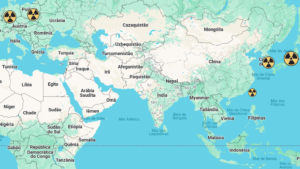

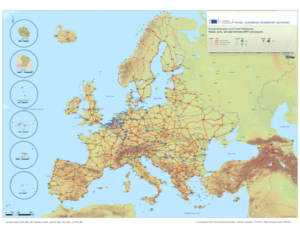
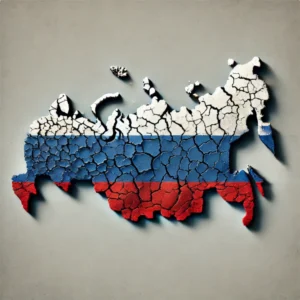
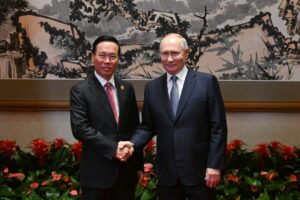

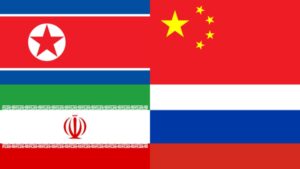


[…] undermining Russian interests in territories historically aligned with Moscow in Eurasia, such as Armenia, Kazakhstan, Ukraine and Uzbekistan. This contest is not just a battle for influence, but a […]
[…] In the case of Armenia’s recent withdrawal, it can largely be explained by Yerevan’s frustration with its lack of support during the Nagorno-Karabakh conflict. […]